This might be attributed to my lifelong fascination of comic book characters like Superman, or awesome Star Wars spaceships, but I’ve found that I love making toys fly in my photographs.
I think flying images satisfy a few different creative urges of mine. I get the chance to bring my toys to life in fun and unexpected ways, and play with two of my favorite pieces of imagery: billowing capes and things floating around in outer space. Also, these shots allow me to do some fun post-processing, but not enough to drive me crazy!
It’s a Bird, It’s a Plane…
One of the very first images I ever took as a toy photographer was of Wonder Woman, flying around in her trademark Invisible Jet. You can’t see the jet because of the invisible LEGO pieces I used, but I assure you that it’s very detailed and is perhaps the most impressive thing ever created with LEGO bricks.
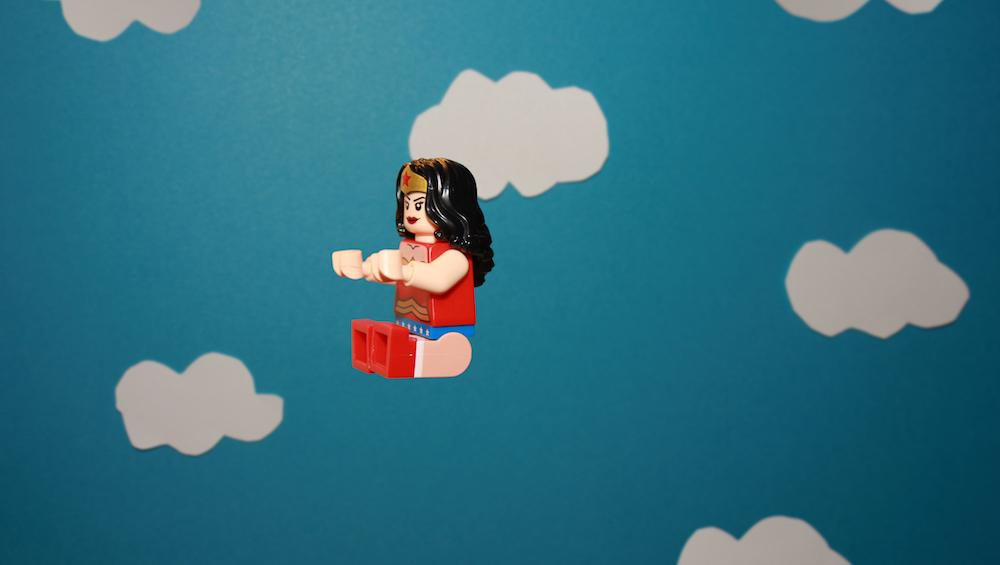
From there, I was hooked, and started experimenting with other ways to illustrate flight in my photographs.
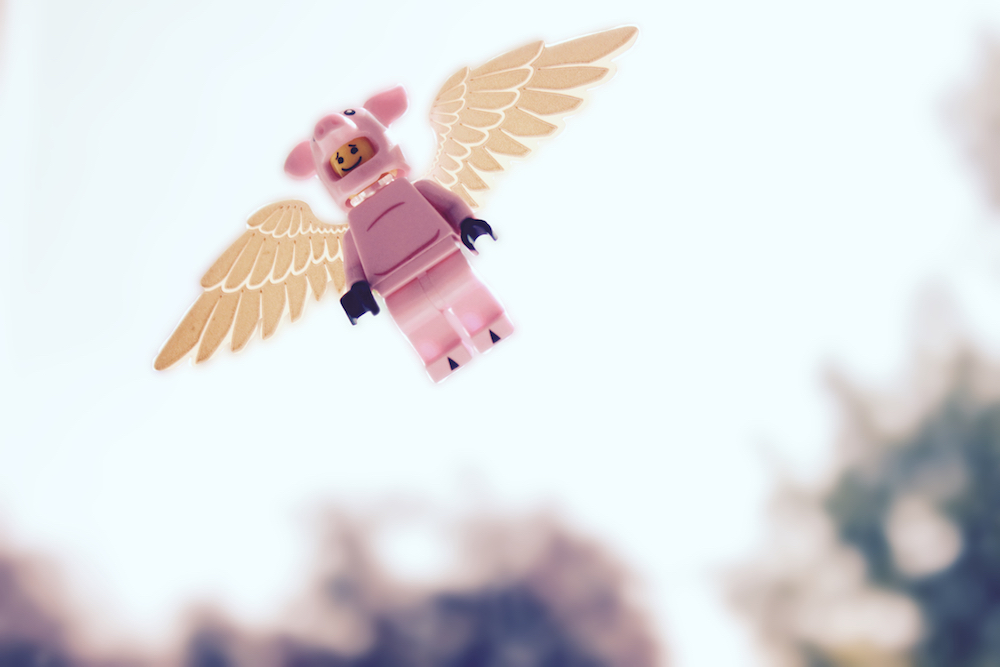
This flying effect was achieved quite simply. I just taped the back of the pig to a window!
I’m certainly not the only photographer to do this. There isn’t a day that goes by where I don’t scroll through Instagram and see toys flying, whether they’re superheroes, pterodactyls, space ships, or poor Stormtroopers caught in explosions. At the photography workshop at Bricks Cascade last month, I set up a station with my favorite blue sky backdrop, and a few clear LEGO bars (part number 42445) on alligator clips, hoping that attendees would try their own flying shots. I was right! The station was a big success, attracting even novice photographers.
Flying… or Floating?
As I looked through my portfolio, I noticed a trend. Many of my flying shots lack a sense of action or movement. My subjects are often just floating there, projecting a sense of effortlessness in their aerodynamics.
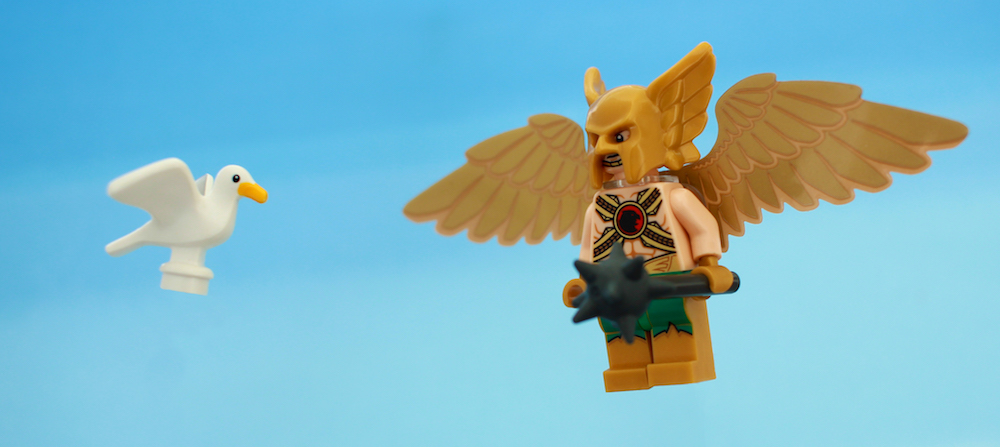
What are YOU looking at?
- It’s a bird, it’s a plane, it’s SuperKitty!
- Hold your breath!
- Directive?
- I’m reading a great book about antigravity. It’s impossible to put down!
- Best in Show
- I ain’t afraid of no ghost!
So, is my fascination with flight, or is it simply with floating and weightlessness? I’ve written before about how I like to make things in my scenes just slightly off-kilter or eccentric, and floating LEGO minifigures certainly achieve that effect!
New Techniques
Recently I’ve been experimenting with making my flying shots more elaborate. One of my absolute favorite shots I’ve ever taken took quite a bit of post-processing work and composition in Photoshop. The paper airplane, minifigure, scarf, and handlebars were all real, but everything else was added in later.
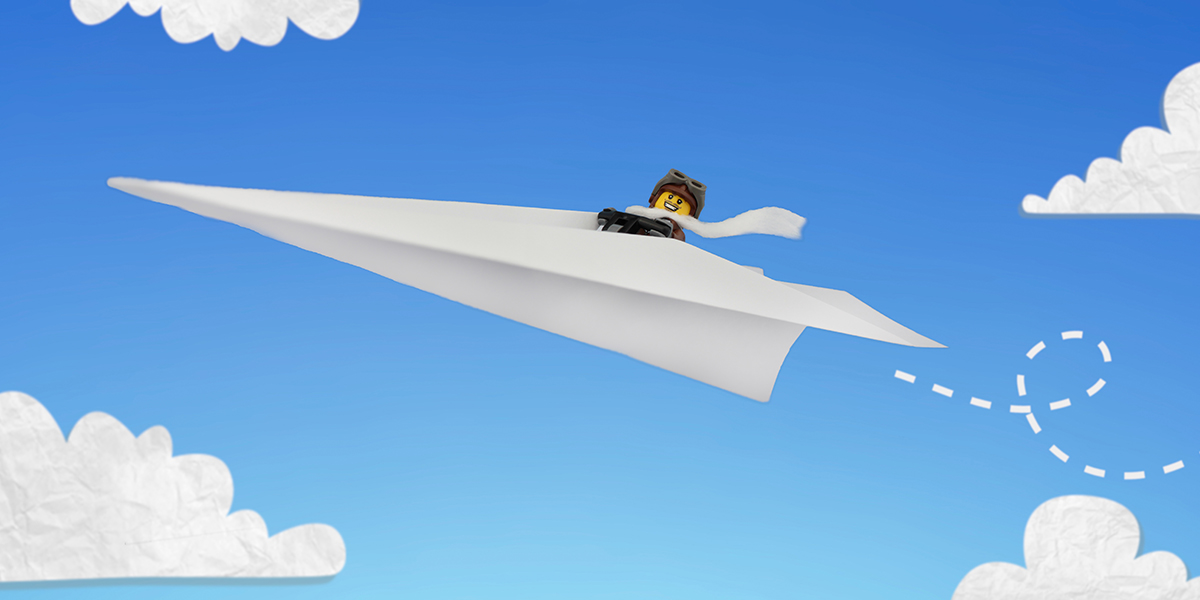
Paper Airplane Pilot
I’ve also been trying to find ways to blur the lines between toy photo and photorealism. I’ve found that adding photorealistic clouds to my go-to blue sky backdrop can bring my shots closer to the Uncanny Valley.
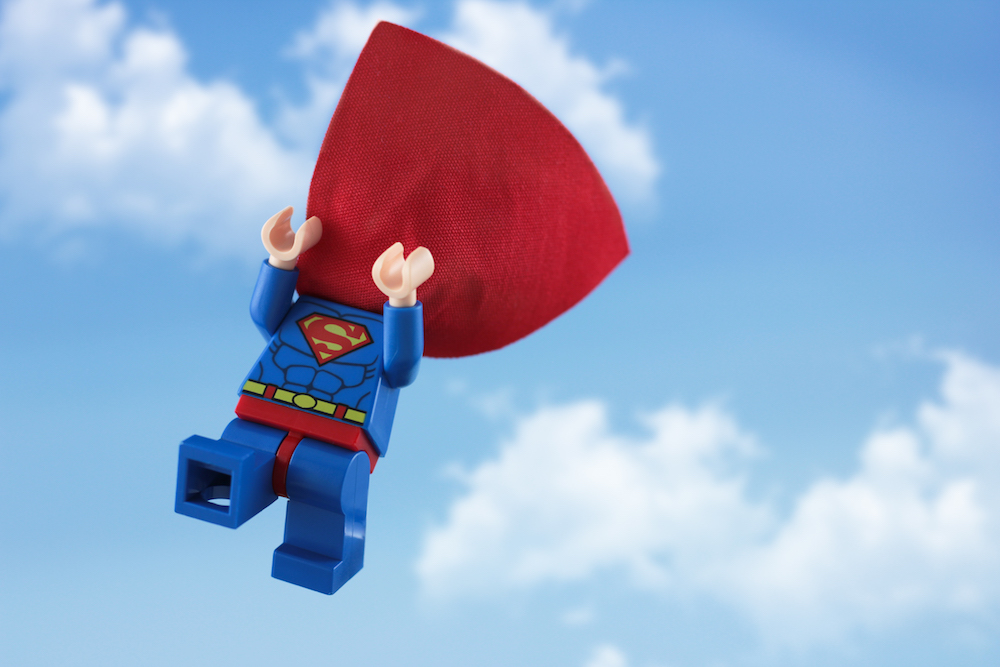
This was inspired by our friend Sunny Ang, who originally captured this shot with a Superman figure. I wanted to see if I could recreate it with LEGO. Thanks for the idea, Sunny!
I’m not 100% sure what it is that drives me to photograph these flying shots. I wouldn’t go as far to say that they’re a trademark of mine, but they are some of my go-to setups and have led to some of my favorite shots. Perhaps it’s the simplicity of sticking my minifigures to wires or attaching them to a clear LEGO bar piece and then removing them in Photoshop. It’s how they do it in the movies, after all!
Have you ever played around with making your toys fly? What are some of your favorite techniques? I’d love to hear them in the comments below!
James
f you’ve made it this far, come continue the discussion over at our G+ community! While you’re at it, subscribe to our weekly email round up so that you never miss a post, and subscribe to our podcast!



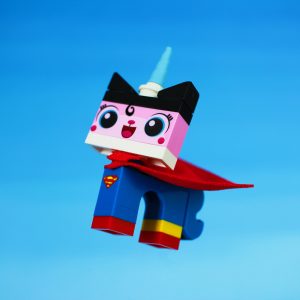
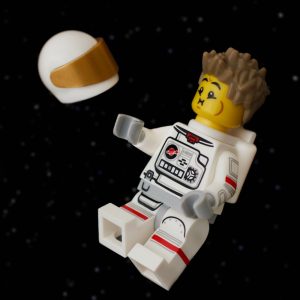

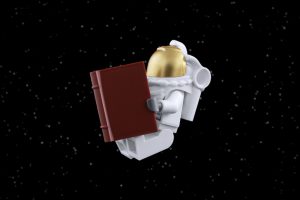
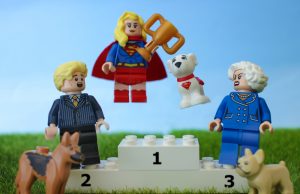
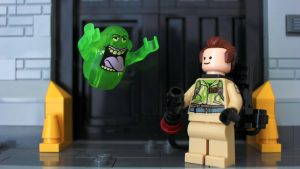
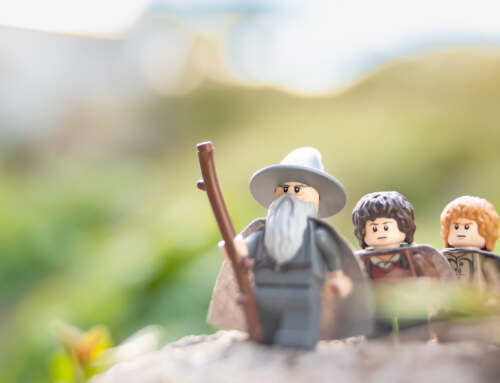

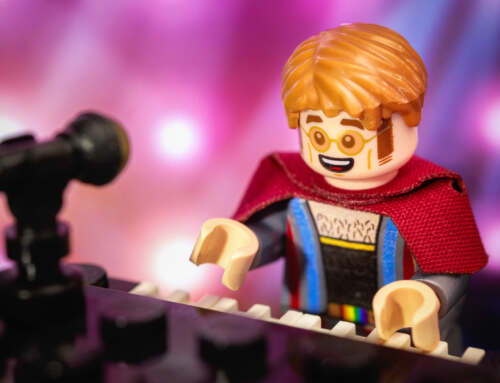
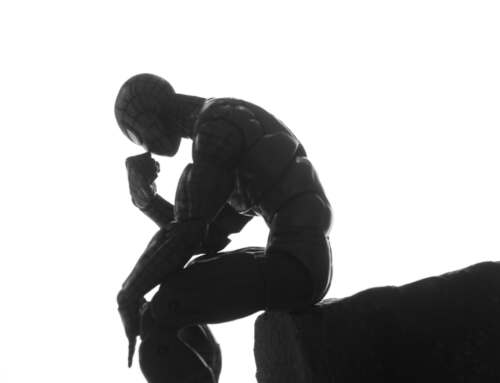
I love your take on the Superman wardrobe malfunction!
Thanks Sunny! I’m glad you like it, I felt weird swiping the idea but of course give you all the credit. Thanks for inspiring me!
For making Lego minifigs fly, I use flower arrangement wires. I will create a loop at the end of the cable, wide enough to go into the hole under the legs of the minifig and the other end anchored to the ground with blue tac. I hope you can imagine what I am trying to describe here!
Nice! I use wire too, though I’m not happy with what I currently have. It can’t bear much weight without slowly drooping. So I usually just stick a LEGO bar piece or wooden skewer to the minifig with some tac, and clamp it down with alligator clips. That seems to do the trick, but some better wire would definitely be more versatile (and outdoor-friendly!)
Fishing wire sometimes works. Sometimes. Other times, it makes whatever object you’re trying to photograph spin in aggravating circles.
I’ve definitely been there! ?
I always enjoy making minifigs fly also 🙂 I usually try to keep my setups simple – either the clear LEGO bar or some sticky tack 🙂 I’ve never tried wires but I should try that technique some day. I love your flying minifig shots James! I especially like the sense of motion in the paper airplane photo 🙂
Lynn
Thanks, Lynn! The clear LEGO bar is definitely my go-to option. I like that it conveniently snaps to a minifig’s legs, meaning I usually don’t have to use tac.
A beaut post with fantastically whimsical images. In regards to Minifigures: providing there is not too much weight, or the angle is not less than 45° from parallel (with the ground) a clear plastic straw can work too. It needs to be shoved pretty far up the Minifigure’s leg to keep it up. It tends to work quite well with healing brushes in post processing.
Ooooh, good idea with the straw, Tony! That wouldn’t have occurred to me but now I have to test that out.
Great post James! I love your flying pictures. I also like to make my bricks flying and usually I use the wire. The problem is when it comes to post processing, I just lack in PS skills to remove the wire without trace 🙂
Thanks, Tomek! It definitely took me a bit of time to nail down the technique and improve my PS skills. One key trick I learned (which you may already know, so forgive me if you do) is to shoot one image with your figure on the wire, then – without moving your camera at all – remove the figure and wire from the shot and take a new photo of just the background. Layer these on top of each other in PS, then when you edit out the wire (I usually do this with a layer mask) you’ll be revealing the background underneath and it will look more seamless.
Love these images. I’m definitely inspired to try more flying shots, especially outdoors. What is your alligator clip setup?
Thanks Leila! I should have added this link to the post; what I use for my alligator clips is one of these “Helping Hands” used for soldering: https://www.amazon.com/ProsKit-900-015-Helping-Hands-Soldering/dp/B01E62773K/
The base has some good weight to it, and the clips themselves are very posable.
I loved seeing the paper plane shot hanging on the Brickvention gallery walls, and I still do!
Thanks Brett! I think it may be my favorite picture I’ve taken ?
I like the description of the artistic experience — following your instinct to create the photos, and then realizing a trend in them later. The mystery of it all, of how the spark of an idea inside us gets expressed in our art, is fascinating to me. Toy photography, especially, makes me wonder. While some photos may stand out as “art” pretty easily, others I think stand out because of how they partner with the viewer.
Some friends of mine don’t seem to “get” the idea of taking pictures of toys. They’re just toys. But sometimes, even they are struck by something in the photo, and although they can’t put their finger on it, they say there’s life in the photos. What we each bring to the photo is as important to appreciating it as what’s IN the photo, and we each experience different things. In a way, I suppose that’s the essence of art.
Yes, wonderfully put! It’s fun to look back at my portfolio and notice trends, and then ask myself why. Unless I start out with the intention of shooting a particular series, the process usually happens naturally.
Some friends and family of mine don’t “get” toy photography either. They think I just like playing with LEGO! Which is true, but only the tip of the iceberg…
Thanks for the wonderful comment, Teddi!